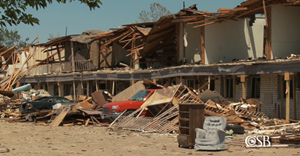CSB Recommends Safety Improvements to U.S. Department of Transportation Emergency Response Guidebook Widely Used by Firefighters

Washington, DC, October 8, 2014—The U.S. Chemical Safety Board (CSB) is recommending critical safety improvements to the widely-used Emergency Response Guidebook published by the U.S. Department of Transportation (DOT) for emergency responders to use when confronting chemical fires, explosions and releases of hazardous materials.
The CSB noted that while the manual is provided for responders to use in transportation incidents, CSB investigators have found over the years that the guidebook is often used by emergency responders – firefighters, medical technicians and police officers -- dealing with chemical accidents at fixed facilities. However, the CSB found some of the directions given in the manual are vague. The CSB document specifically cited guidebook changes needed for handling ammonium nitrate fires such as the one that led to a massive explosion at a fertilizer storage facility in West, Texas last year.
The CSB recommendations are contained in a seven-page response to a formal Request for Information (RFI) the transportation department issued as it seeks comment on a proposed revision issued on August 29, 2014, an edition scheduled for public release in 2016. The current guidebook was released in 2012. The guidebook – jointly produced with Canada and Mexico and in use in those countries as well – is used across the country by emergency responders who can quickly look up correct responses to a myriad of chemical accidents. The department’s website states that “DOT's goal is to place an ERG in every emergency service vehicle nationwide.”
CSB Chairperson Rafael Moure-Eraso said, “We have respectfully submitted our comments to the DOT, based on years of our incident investigations, which show that responders are often not aware that this important manual is intended only for responding to chemical releases or fire incidents in transportation accidents, such as railroad tankers or truck-hauled containers, and not fixed facilities. Directions on how to respond to incidents at fixed chemical or manufacturing facilities may be much different.”
The CSB proposed that the Emergency Response Guidebook (ERG) place a cautionary note at the front of the manual – rather than on page 356 wher it is now – to read, in capital letters, “only intended for use when responding to transportation incidents.”
CSB Investigation Team Lead Johnnie Banks noted, “The CSB recommended the ERG include additional guidance on wher responders can find chemical hazard information in responding to incidents at fixed facilities, such as Material Safety Data Sheets or EPA-required ‘Tier 2’ information which specifies the chemicals on hand at facilities. We feel responders need to know wher to go for data quickly in the heat of battle.”
The CSB found what investigators called “vague or poorly defined terms” in the proposed new guidelines. wher firefighters are told, for instance, to “fight fire from maximum distance,” the CSB recommended DOT specify the distance so firefighters are not left to guess what “maximum” means.
The CSB noted the catastrophic explosion at West Fertilizer resulted in 15 fatalities and over 250 injuries, and that twelve first responders perished which fighting the blaze when the storage facility exploded. The CSB reviewed the DOT guidance in the ERG for ammonium nitrate fertilizer, classified as an oxidizer. Within Guide 140 for a large fire, the guidance states “Flood fire with water from a distance.” In the case of an ammonium nitrate fire similar to West Fertilizer, the CSB response to DOT notes that “flooding the fire with water from an undefined distance could result in serious injuries or fatalities if the ammonium nitrate detonated.”
The CSB RFI response addresses in detail the need for additional language in DOT guidance regarding ammonium nitrate fertilizer to consider its “unpredictable and explosive nature” and the “potential for detonation within a very short time frame.”
The CSB is an independent federal agency charged with investigating industrial chemical accidents. The agency's board members are appointed by the president and confirmed by the Senate. CSB investigations look into all aspects of chemical accidents, including physical causes such as equipment failure as well as inadequacies in regulations, industry standards, and safety management systems.
The Board does not issue citations or fines but does make safety recommendations to plants, industry organizations, labor groups, and regulatory agencies such as OSHA and EPA
